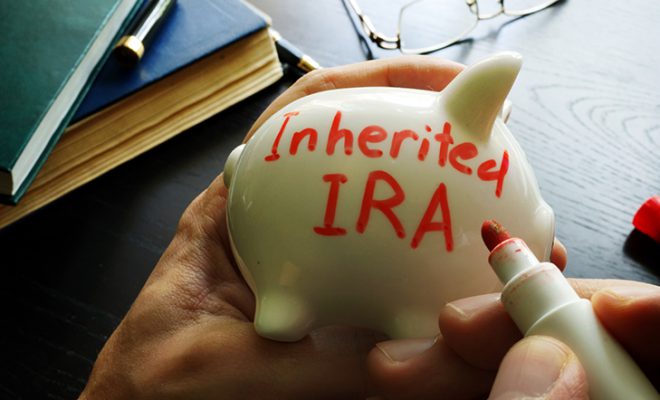Are Your Average Retirement Savings Normal?
Retirement saving has always been a financial goal for most Americans. However, despite understanding the importance of saving for their retirement, most Americans are under-saving for their golden years, as reported by PwC’s Retirement in America report. As per the study, one in four Americans have no savings for their retired life, and the remainder of the people who are saving for their retirement are not putting aside enough funds. The report stated that the median retirement account balance for people between 55 and 64 is only $120,000. Given this sum, if retirement lasts for 15 years, a modest distribution would barely be $1,000 per month. And with the life expectancies figures rising, this level of retirement savings falls considerably short for a fulfilled retired life for most Americans. Further, in light of the news of Social Security reserves expected to be over by 2034, most retirees might not be financially secure during the latter part of their lives.
As per the PwC Retirement in America report, 13% of the people who are 60 years or older and 17% of those between 45 and 59 have no retirement savings. This percentage steeply rises as you consider the young population. 26% of people between the ages of 30 and 44 and 42% between 18 and 29 have no retirement savings. Overall, the average retirement savings by age is significantly low in the U.S. One of the prime reasons for this is the lack of awareness. On a general level, people are not aware of how much an average person needs to retire and live a comfortable life. As per a 2020 TD Ameritrade report, most Americans wish to retire by 67. However, they are not aware if they are on track and whether their average retirement savings can sustain their living expenses during the non-working years of their life.
Undoubtedly, saving for retirement is a personal journey governed by your financial condition, liabilities, and retirement goals. The average retirement savings you need for a comfortable retired life depend on your age, income, standard of living, desired income during retirement, inflation, and more. However, even after considering all these factors and saving adequately as per your estimates, you might still not have a financially relaxed retirement because your retirement corpus is less than the average retirement savings standard as per your age. Therefore, it is critical to understand your retirement savings goals, save for them consistently, and assess if your average amount saved for retirement is per the general standard. You can also try and reach out to a financial advisor to help create a retirement plan for you and identify the sum that you need to put away every year to meet your retirement goals and live comfortably in your golden years.
Here is everything that will help you understand how much to save for a comfortable retirement:
Table of Contents
How much does the average person need to retire?
As a wise retirement planner, it is good to know how much you need to retire. Once you know your retirement corpus target, you can analyze if your average retirement savings are normal or not. As per the Federal Reserve report on Economic Well-being, 63% of Americans do not think or are unsure if their savings are on track with the average retirement savings. It can be slightly challenging to estimate if your retirement fund is on track with the average retirement savings.
One easy way to assess this is by understanding the average retirement savings by age and comparing your savings balance with the estimates. Even though your financial situation is different from others, it can be helpful to compare the numbers with peers and with older Americans. Comparing your retirement savings with the average US retirement savings can give you an insight into your retirement preparedness and know whether you are on track, ahead of the curve, or need to pick up the pace.
To know the right amount of retirement savings for your age, some financial experts suggest using the 80% retirement planning rule. As per this benchmark, a wise retirement plan should include 80% of the pre-retirement income. It is advised to begin your retirement planning journey as soon as possible. If you start in your 20s, financial advisors suggest saving at least 10-15% of your gross income for retirement. This is in addition to the money you save for your short-term goals and emergencies. Moreover, if you have financial goals like leaving a legacy for your children, investing in a second home, retiring early, etc., you will need more funds for a comfortable retirement. Additionally, medical costs and economic factors also impact your retirement financial security in the long run.
You can use one of the many available online retirement calculators to precisely know how much you need to retire. Alternatively, you could seek professional guidance on the amount you should have in your retirement nest egg to ensure you live a fulfilling retired life.
Average retirement savings by age
If you are still confused and want to assess if your savings would be enough to fund the retirement lifestyle you desire, you can use these average retirement savings benchmarks per age.
Retirement savings in the 20s
As per the Vanguard 401(k) data, 2019, the average 401(k) balance for people under 25 is $5,419, and the average 401(k) savings rate is 4.7%. However, people above 25 but below 34 have an average retirement balance of $26,839 and an average 401(k) savings rate of 6.1%.
Retirement savings in the 30s
According to the Vanguard 401(k) data, 2019, the average 401(k) balance for people between 35 to 44 years is $72,578. The average savings rate for this group is 6.6%.
Retirement savings in the 40s
People above 45 years and below 54 years in the U.S. have an average 401(k) account balance of $135,777. The average 401(k) savings rate is 7.3% for this category.
Retirement savings in the 50s
For those between ages 55 and 64, the average US retirement savings are $197,322, with an average savings rate of 8.5%.
Retirement savings in the 60s and above
The average 401(k) account balance for Americans in their 60s and above is $216,720, with an average 401(k) savings rate of 9%.
The figures indicate that retirement savings increase as you near your retirement age. However, in most age groups, the average amount saved for retirement is not sufficient. As per the National Institute on Retirement Security, nearly 40 million American households have no retirement savings. These figures, coupled with the fact that the average US retirement savings are still considerably low, the Employee Benefit Research Institute specifies an approximate retirement savings deficit at $4.3 trillion. This implies that retirement savings of American households (with the head of the household between the ages of 25 and 64) are short by nearly $4.3 trillion. Therefore, it is important to know the average retirement savings, but it is not advisable to set it as a milestone or an upper limit. To ensure your retirement savings do not fall short, create a retirement corpus after considering your retirement needs, expected standard of living, inflation, etc.
Suggested average retirement savings by age
The average US retirement savings might seem impressive, but financial experts suggest saving more for your retirement than the present figures.
Retirement savings in the 20s
The right to begin saving for retirement is as soon as you get a full-time job. Most likely, in your 20s, you would just be starting your career and might not have a lot to contribute to your 401(k) plan. However, irrespective of how small the amount is, it is important to start contributing to your 401(k) as soon as possible. You might have pending student loans to pay off first, but that should ideally not disarray your contributions to your 401(k) plans. If you begin saving for retirement in your 20s, you can take advantage of the power of compounding, invest aggressively to maximize returns as well as benefit from the free money in the form of employer matching contributions for your 401(k) plan.
For people in this group, financial experts suggest saving an amount equivalent to your annual salary by the time you are 30. The median income of this group is nearly $33,000. Hence, ideally, by the time you turn 30, it would be advisable to have $33,000 at least in your retirement savings. It is best to build a budget and cut down non-discretionary expenses to contribute to your retirement fund.
Retirement savings in the 30s
According to experts, people in their 30s should aim to save three times their annual salary by the time they are 40. The median income for this group is $48,000. This means if you are in this age group, you should ideally have $144,000 compared to the average retirement savings for people between the ages of 35-44 years, which is $72,578.
In this stage, you should focus on boosting your retirement corpus and maximizing contributions to retirement savings accounts like a 401(k), an IRA (Individual Retirement Account), a Roth IRA, etc. Continue to focus on your budget and review your expenses to cut down on unnecessary items. Also, take advantage of the employer contributions. In this stage, you have more than a decade until retirement, allowing you more time to take high risks and maximize your investment returns. You will also be able to leverage the power of compounding effectively.
Retirement savings in the 40s
This is the time (the late 40s to early 50s) when most people reach the peak of their professional careers. However, you still have many years until retirement, and you can still boost your retirement corpus. It is advisable to carefully scrutinize your budget and identify areas to cut down heavy expenditures like dining out, online subscriptions, etc. This is the ideal time to catch up and cover any gap in your retirement nest egg.
Experts suggest having six times your annual salary by the time you are 50. The median earnings for employees in this age group are usually $58,000. So, when you are nearing 50, aim to at least have $348,000 to secure a comfortable retirement.
Retirement savings in the 50s
Experts advise you to have at least eight times your annual salary by the age of 60. The median income for a 55-year-old is $57,500. This implies that you should have at least $460,000 in your retirement fund.
In this stage, retirement is around the corner, and multiple aspects of your retirement planning are likely to change. Generally, it is best to adopt a conservative investment approach and focus on capital preservation in this stage rather than maximizing returns. In this stage, you become eligible for Social Security benefits (for most retirees, the official Social Security age is between 65 and 67 years). This is the right time to rebalance your portfolio, reduce potential risks and review your savings strategy to ensure you have a regular income stream during retirement. Moreover, make catch-up contributions in permissible accounts such as a 401(k) and an IRA. The IRS permits people above 50 to make catch-up contributions to their 401(k) plan of up to $6,500 above the average limit for other employees ($19,500 for 2021). Additionally, you can contribute an extra $1,000 to your IRA. Further, this is also a period when you should consider living on a retirement budget to see if your savings are sufficient to cover your aspired retirement lifestyle.
Retirement savings by the time you retire
As per guidelines, you should have ten times your annual salary when you retire or reach your full retirement age. The median salary for a 65-year-old person in the US is $54,000 annually. This means that you should have at least $540,000 saved until retirement (ideally the age of 65). However, considering the estimated retirement medical expenses (approximately $390,000), saving an amount higher than the suggested retirement savings could be wiser. A few reports indicate that you should have at least $1 million in your retirement savings when you retire.
If you are still far from this benchmark, you can think about which assets you can monetize. You could also consider delaying your retirement and working for a few more years to accumulate a significantly higher sum for the later years. Working longer helps you save more as well as reduces your retirement life span.
You can assess these figures to know if your retirement savings are on track with the average retirement savings figures. However, as specified, average retirement savings do not indicate a safe benchmark for retirement. Hence, the best way to assess your retirement readiness is to compare your retirement savings with the suggested retirement balance.
If you are not on track, do not panic. Irrespective of your age, you can deploy multiple strategies to cope and save enough for a comfortable retired life.
Financial strategies to cope with retirement savings gap
After assessing the average retirement savings by age and considering the expert-recommended benchmark, you can use these effective strategies to increase your savings if you feel you are lagging:
- Put your money to effective use immediately: The objective is to start saving and investing early. If you start saving as soon as you can and invest your money wisely, you will be able to accumulate a large retirement sum, owing to the power of compounding. For instance, if you begin investing at 23, you can save nearly $420 a month and most probably be a millionaire by the age of 67. This is assuming your investments give a 6% annual rate of return. In contrast, if you invest at the age of 35, you would have to reserve $900 each month to achieve the same retirement savings target.
- Automate your contributions: If the prime reason for your average retirement savings falling short is an inconsistent contribution to your retirement accounts, then you can work around the flaw. The best way to ensure you make retirement contributions without failing is by automating your retirement savings. Consider having a portion of your pay cheque sent directly to a retirement account of your choices, such as a 401(k), an IRA, or a Roth IRA. When you do not get the money, you might learn to live without those funds. If you begin early, you can set aside 1% of your income. However, ideally, it is advisable to give 10% of your pre-tax income. Moreover, when you set automatic transfers from your income, it is wiser to review those transfers and auto-increase your contributions.
- Increase your income: The best way to cope with your retirement savings deficit is by increasing your income. You could negotiate a raise, consider a job change, change your investment strategy, create an alternative source of income (invest in real estate, take up freelancing, etc.). If you are more than ten years away from retirement, changing your investment strategy to include more stocks (balanced with your risk profile) might work effectively to give your earnings a boost in the long term.
To conclude
Overall, it is good to know how well your retirement savings compare to peers or the standard average retirement savings data. However, as a wise retirement planner, it is best if you evaluate your retirement savings with the suggested retirement savings figures and take corrective actions accordingly. You can always consult a professional financial advisor to maximize your retirement savings and achieve the suggested retirement readiness benchmark, regardless of your age.

















